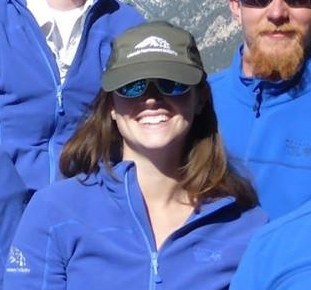It has been an amazing experience working alongside CFI and the U.S. Forest Service to assist with trail design, and I am fortunate to witness all of the hard work that goes into this process. Before starting with CFI, my knowledge of trail work was limited. In a short amount of time, I have learned and experienced so much! Here, I would like to share a little on what I have learned about trail building.
The first aspect involved in building trails is the design work, which is primarily what I am doing this summer. It has been said that designing a trail requires “90% psychology and 10% engineering,”, and this seems to be about right. It is not easy for the untrained eye to visualize a new trail within an area of downed trees, thick Aspen shrubs and giant boulders, but our experienced team is capable of accomplishing this. They must determine where a trail will most effectively minimize impact on vegetation and prevent the formation of “social trails”. Social trails are formed by hikers, either because there was no designated trail or because the designated trail has been severely damaged by weather. As a result, social trails ruin natural habitats and destroy sensitive alpine vegetation.
After the design comes the fun part: trail construction. Although this part is fun, it involves lots of labor and time-intensive work. I was given the chance to contribute to a trail project at El Diente Peak in the Lizard Head Wilderness. I first familiarized myself with the new trail, which was designed a few years back. I then learned how to use a pulaski, which is a hand tool that combines the axe and adze. With my pulaski, I worked to clear a path for the trail by separating logs, lopping-off branches, and picking large rocks out of the mud. It was a good day of hard work. I enjoyed seeing the progress of my co-workers and experiencing all of the passion, sweat, blood and tears involved in creating a sustainable trail for the everyday hiker.
Once a sustainable trail is implemented, periodical maintenance is required. Erosion and water are the trails’ worst enemies, and they may require rock walls and water bars to be rebuilt. Hopefully, thanks to good design and building, a lot of maintenance will not be needed. The goal for our trail crews is to make sure these trails will last for many years to come.



